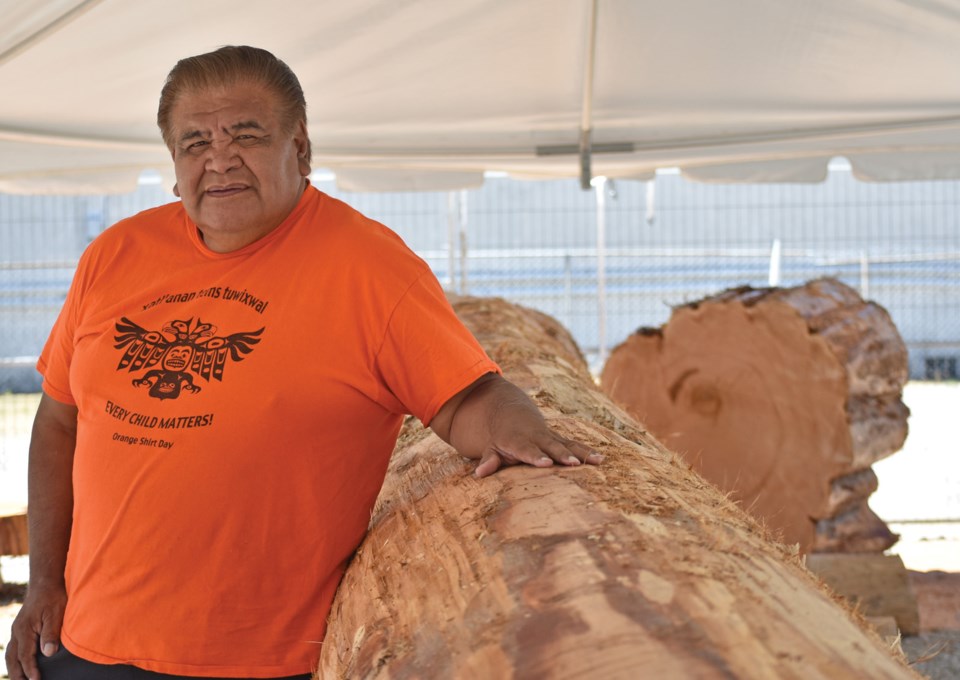During the National Indigenous Peoples Day weekend celebrations, the public will be invited to “chip away” at an approximately 34-foot red cedar log that, over the next six months, will be transformed into a totem pole symbolizing reconciliation on the Sunshine Coast.
“Every totem pole tells a story and this particular one … is very meaningful,” said master carver ?antuni Tony Paul, who has been hired by the syiyay Reconciliation Movement organization to carve the cedar and work with the public to bring them into the process.
“This means so much to me because I am a 10-year residential school survivor myself,” Paul told Coast Reporter.
At the base of the totem pole will be copper nails, representing prosperity and the survivors of residential school, on top of which will be carved a residential school, and two children, representing the first boy and girl registered at St. Augustine’s Residential School.
Standing behind them will be two ancestors, followed by the shíshálh Nation family clans, each of which will be holding a child, to symbolize independence.
Above the clan animal figures will be men holding drums to symbolize the return to culture, followed by a longhouse, “where we all started from to begin with,” said Paul. Unity, wisdom, friendship and healing will be communicated through hummingbirds and frogs, carved around the back of the pole.
He is also gifting afive-foot section, a double-headed eagle perched at the top – the symbol for shíshálh Nation.
“This will bring a lot more awareness to outside the community. Making a statement that we are in a healing process,” said Paul, leaning against the length of timber at the work site.
Situated between Raven’s Cry Theatre and Big Mac’s convenience store in Sechelt, the site is intrinsic to the story of this totem pole.
On June 28, 1904, St. Augustine’s Residential School opened, and school children from First Nations communities on Vancouver Island and the Lower Mainland were taught there until the facility was closed in 1975.
The last remaining building of the residential school site was used as the Nation’s band office, where elders met with scholar Ron Beaumont to document the language of she shashishalhem.
The site is clear of all that now – the last building was demolished on Nov. 6, 2008, with the Sechelt Fire Department assisting with a controlled burn, making way for what would eventually become the site for the “Carving Tears into Dreams of Reconciliation” totem-carving project.
A blessing occurred May 22, and since then, Paul has peeled the bark away, cut the knots down so they’re flush with the log and will be putting in centre lines to ensure the design elements are symmetrical. After the designs are drawn onto the wood, Paul will begin rough cutting the shapes with a chainsaw.
Once the finer work begins, requiring chisels and carving knives, the public will be invited to help in the process, which is expected to last throughout the summer. Paul is inviting other nations that attended St. Augustine’s “to please come and chip away with me, also.”
For Paul, the log also carries special significance, since it originates from Bella Bella, the traditional territory of Heiltsuk Nation carver Bradley Hunt, a good friend of Paul’s from whom he continues to draw inspiration. And it was carvers from that area who were first invited to the Sunshine Coast to teach shíshálh craftsmen the art of totem carving. “That makes it a little more meaningful, for me, too,” said Paul.



